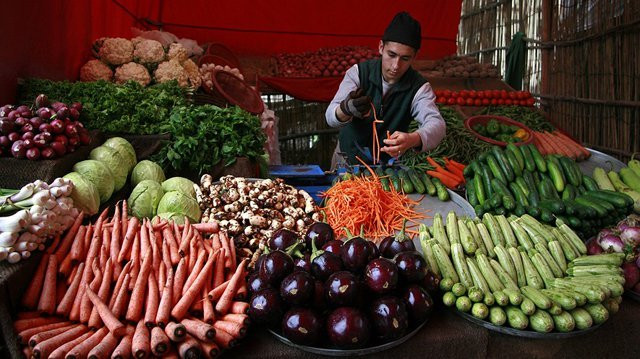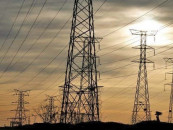Inflation reading clocks in at 4.4% in January
Contrary to SBP’s expectations, inflationary indicators slowed down

Contrary to SBP’s expectations, inflationary indicators slowed down. PHOTO: REUTERS
The headline as well as core inflation indicators slowed in January over the same month of the previous year, reported the Pakistan Bureau of Statistics (PBS) on Thursday. Measured by Consumer Price Index, the headline inflation indicator slowed down to 4.4% in January over December’s rate of 4.6%.
The overall pace of prices increase slowed down despite the government’s decisions to devalue the rupee against the US dollar and the continuous increase in prices of petroleum products.
Inflation in Lahore highest among Pakistan's major cities
On a year-on-year basis, the non-food non-energy inflation, commonly known as core inflation, also slipped to 5.2% in January, which was the lowest level in the past one year.
There was a reduction of 30 basis points in core inflation when compared with December, according to the PBS.
Among 89 commodity groups of CPI, the core inflation covers the price movement of 43 items. The SBP uses core inflation while formulating its monetary policy. By taking into account ‘upward movement’ in core inflation, the State Bank of Pakistan last week raised the key interest rate by 25 basis points to 6%, partially reversing its expansionary monetary policy.
“Average headline inflation remains within the forecast range of SBP, but core inflation has continued to increase,” according to the Monetary Policy Statement of the SBP.
The PBS data showed that there was no major movement in core inflation during the past one year that remained in the range of 5.2% to 5.5%.
But the SBP said that core inflation continued to maintain its higher trajectory. It added this together with a lagged impact of Pak rupee depreciation and rising international oil prices are likely to increase the pace of inflation in the coming months.
The central bank had also said that the average inflation for the current fiscal year is still projected to fall in the range of 4.5 to 5.5% but at the end of FY18 year-on-year inflation is likely to inch towards the annual target of 6%.
In order to pre-empt overheating of the economy and inflation breaching its target rate, this is the right time to make a policy decision that would balance growth and stability in the medium to long-term, the SBP had said.
Inflation spikes 4.6% in Dec 2017, hits 8-month high
However, January’s inflation bulletin might surprise the central bank.
Due to slow down in both the key inflation indicators, the PBS data showed that the average inflation rate during the first seven months of the fiscal year, (July-January) remained at 3.85%, which was also the level observed during the same period of the last fiscal year.
The PBS inflation bulletin showed that on a yearly basis, onion prices still remained high at 107%, tomatoes by almost 56%, chicken 37% and potatoes over 29%. In January, kerosene oil prices jumped by almost 20% and petrol 13.4%.
The government is increasing the petroleum products prices owing to an increase in crude oil prices in the international market. Another reason behind high prices of the diesel is the 25.5% general sales tax on diesel. It is significantly higher than the standard 17% GST rate.
Published in The Express Tribune, February 2nd, 2018.
Like Business on Facebook, follow @TribuneBiz on Twitter to stay informed and join in the conversation.



















COMMENTS
Comments are moderated and generally will be posted if they are on-topic and not abusive.
For more information, please see our Comments FAQ